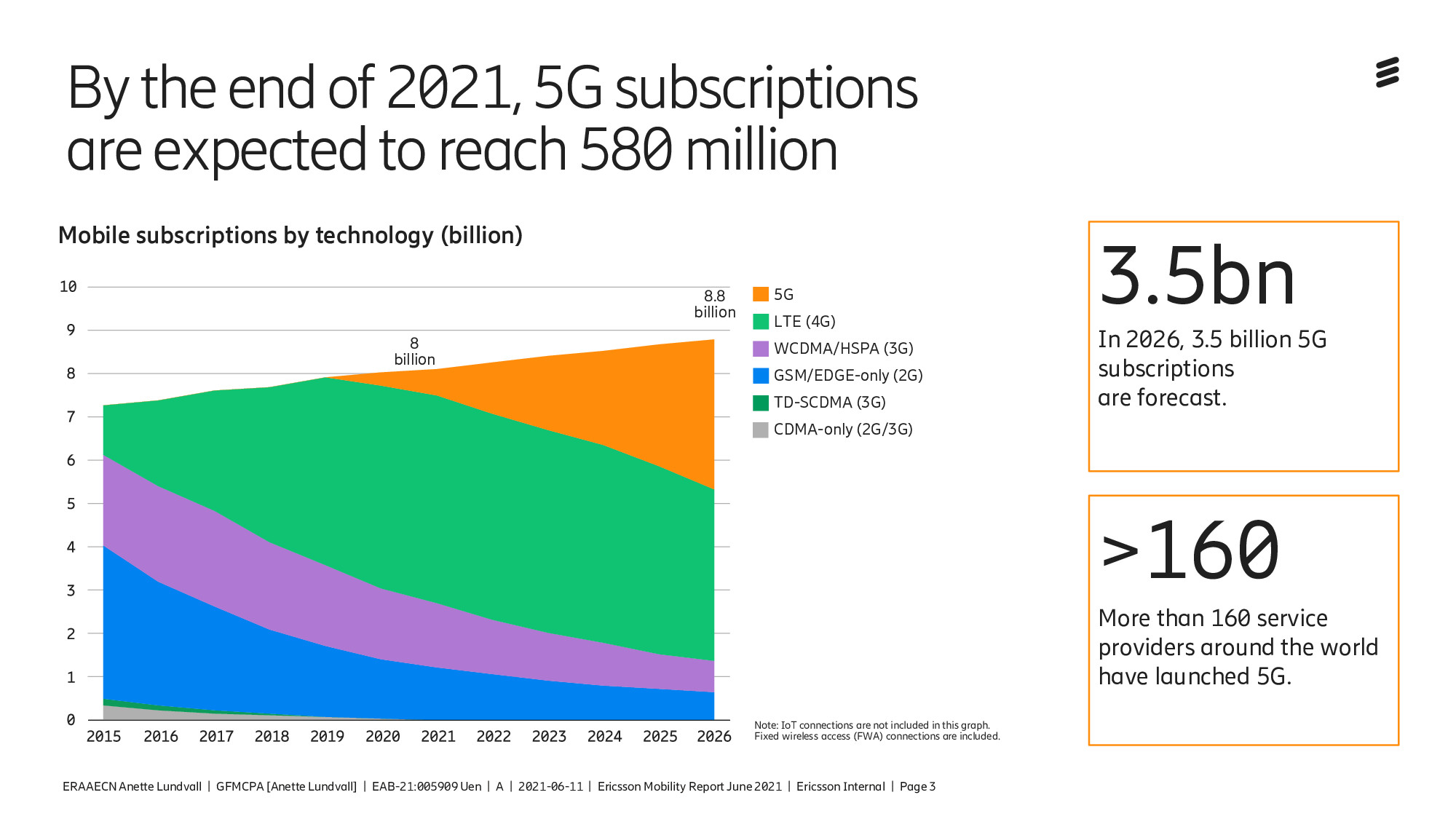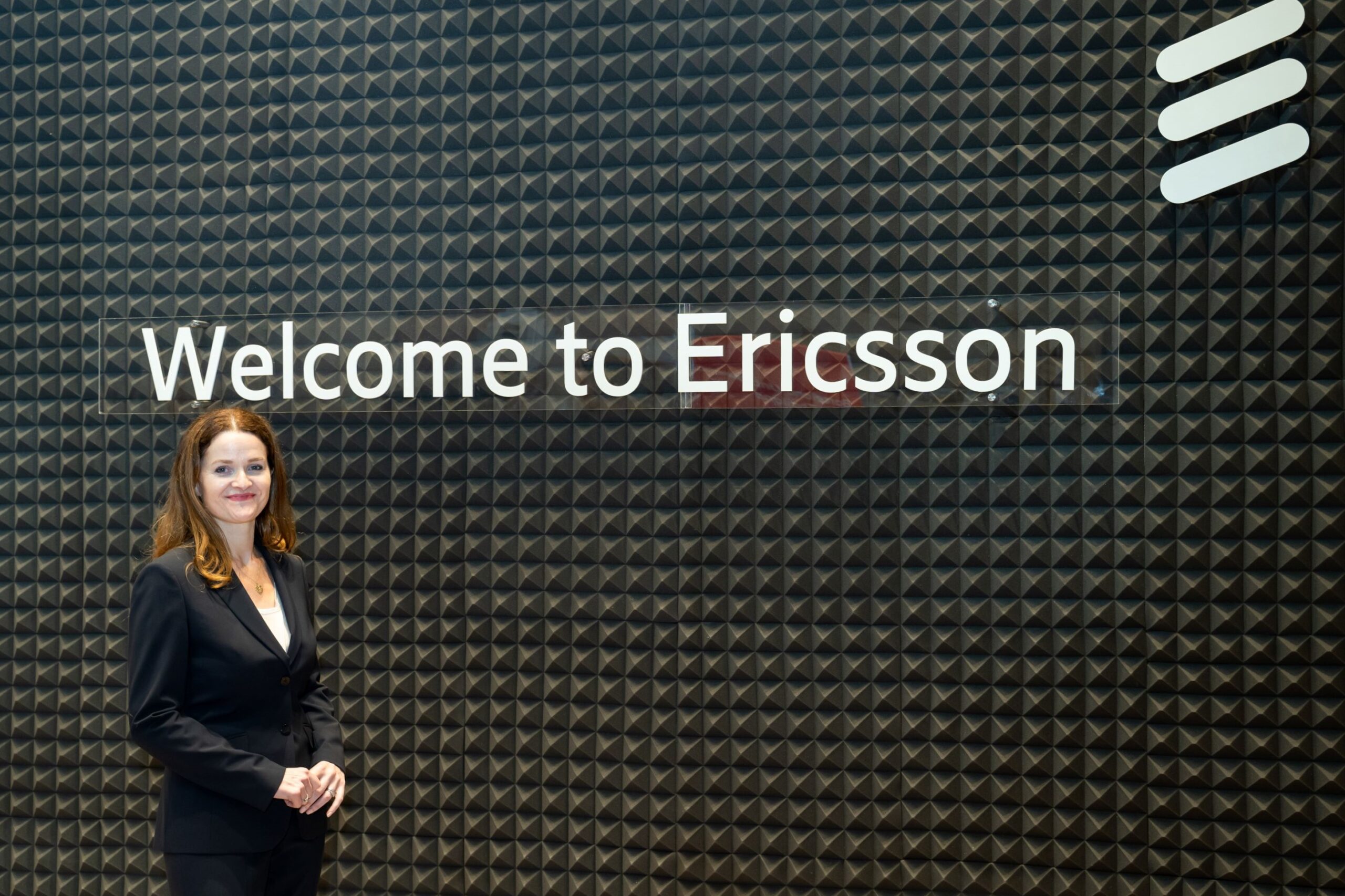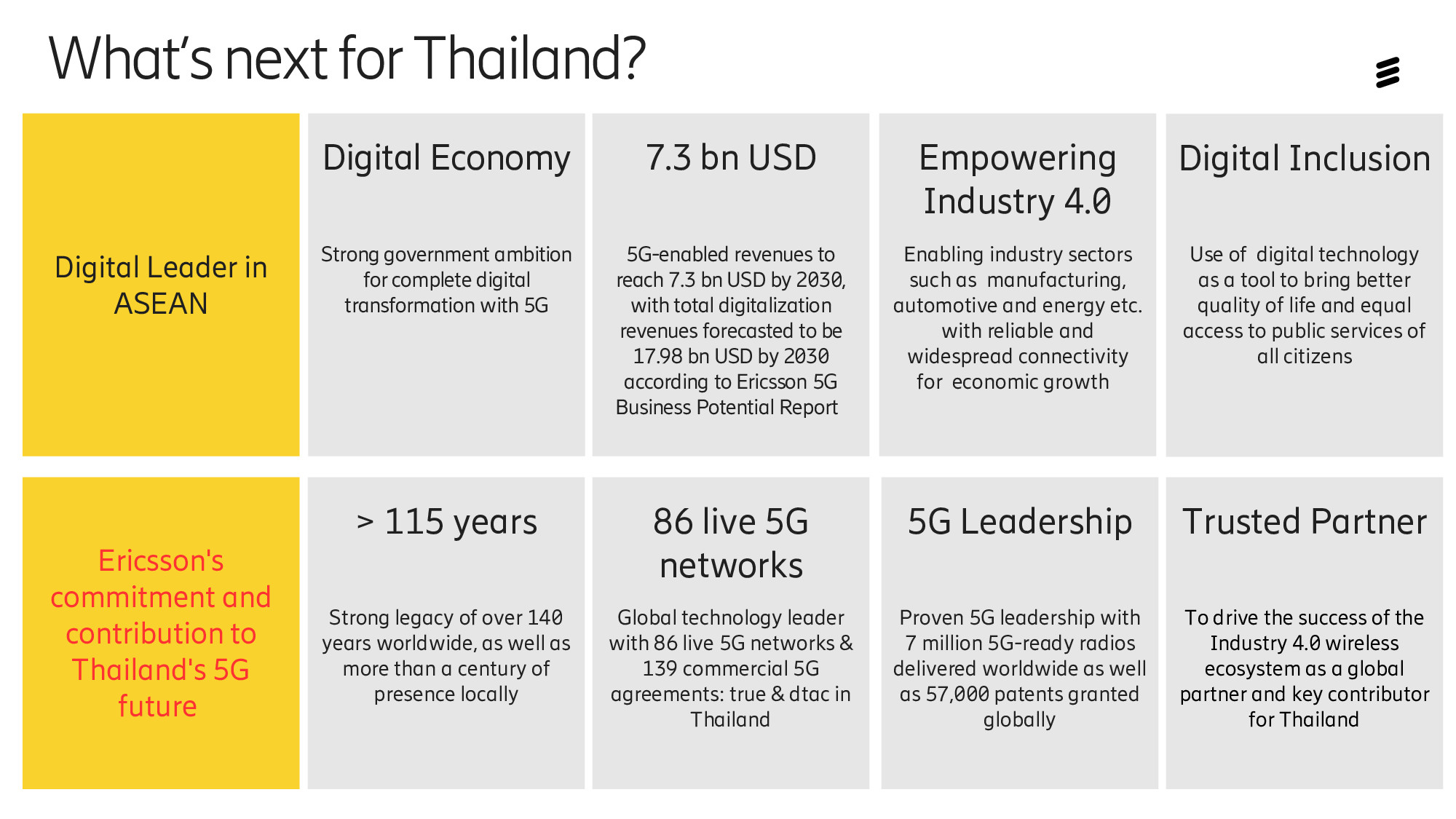- 5G subscriptions with a 5G-capable device grew by 70 million during the first quarter of 2021 and are forecast to reach 580 million by the end of 2021
- South East Asia and Oceania region will see data traffic per smartphone growing at the fastest rate globally by 2026. 5G subscriptions to touch 400 million by 2026.
- Ericsson is supporting Thailand’s plan to develop its Industry 4.0 Wireless Ecosystem as a trusted global 5G partner.

Ericsson (NASDAQ: ERIC) projects that 5G mobile subscriptions will exceed 580 million by the end of 2021, driven by an estimated one million new 5G mobile subscriptions every day.
The forecast, which features in the 20th edition of the Ericsson Mobility Report, enhances the expectation that 5G will become the fastest adopted mobile generation of all time, with 3.5 billion 5G subscriptions and 60 percent 5G population coverage forecast by the end of 2026.
Mobile subscriptions in the South east Asia and Oceania region have now exceeded 1.1 billion, with 5G subscriptions being just below the 2 million mark. 5G subscriptions are expected to grow strongly over the next few years with a forecast of about 400 million by 2026.
South East Asia and Oceania region will also see data traffic per smartphone growing at the fastest rate globally, reaching 39GB/month by 2026 – a CAGR of 36 percent. Total mobile data traffic will grow accordingly, with a CAGR of 42 percent, reaching 39EB/month driven by continued growth in 4G subscriptions and 5G uptake in those markets where 5G has already been launched.
Nadine Allen, Head of Ericsson Thailand, said: “As the pioneer in launching 5G commercial service in South East Asia, Thailand is well positioned to develop its ambitious Industry 4.0 Wireless ecosystem to enhance consumer mobile experience and support the digitization of its industries like manufacturing, energy and healthcare sectors. Having been present in the kingdom for 115 years, Ericsson has been serving as a widely trusted global 5G partner to support Thailand realize its vision.”
According to the report, the pace of adoption varies widely by region. Europe is off to a slower start and has continued to fall far behind China, the U.S., Korea, Japan and the Gulf Cooperation Council (GCC) markets in the pace of 5G deployments.
5G is expected to surpass a billion subscriptions two years ahead of the 4G LTE timeline for the same milestone. Key factors behind that include China’s earlier commitment to 5G and the earlier availability and increasing affordability of commercial 5G devices. More than 300 5G smartphone models have already been announced or launched commercially.
This commercial 5G momentum is expected to continue in coming years, spurred by the enhanced role of connectivity as a key component of post-COVID-19 economic recovery.
North East Asia is expected to account for the largest share of 5G subscriptions by 2026, with an estimated 1.4 billion 5G subscriptions. While North American and GCC markets are expected to account for the highest 5G subscription penetration, with 5G mobile subscriptions comprising 84 percent and 73 percent of all regional mobile subscriptions respectively.

5G already changing smartphone user behaviour in Thailand
According to the report – Five Ways to a Better 5G, the 5G consumer market could be worth USD 31 trillion by 2030 globally, with communications service providers (CSPs) able to secure USD 3.7 trillion of this on the back of 5G connectivity.
The latest Ericsson ConsumerLab report highlights the accelerated consumer intent to upgrade to 5G despite the current Covid-19 pandemic. In Thailand, around 5 million smartphone users could take up 5G this year. In addition, there are already new user behaviour triggered by 5G subscriptions today. 5G early adopters are now spending 1.5 hours more per week on AR apps and around 1 hour more on cloud gaming than 4G users. While 57% 5G users have started streaming HD video or increased their usage, 14 percent smartphone users have also decreased their Wi-Fi usage after upgrading to 5G.
Early adopters in Thailand are satisfied with 5G speeds, but they also expect more innovation. Consumers say they are willing to pay 50 percent more for 5G plans bundled digital services if high impact “business ready” use cases are commercialized. Services such as 5G TV, bundled with FWA, high-speed cloud, Hi-Fi music, transactable AR, In-venue and remote immersive experiences for sports and concerts are likely to persuade consumers to upgrade to 5G premium plans. In other words, the greatest revenue boost for CSPs will come by addressing the perception challenges around 5G availability, new plans and new service offerings that make 5G valuable.

NOTES TO EDITORS:
FOLLOW US:
Subscribe to Ericsson press releases here
Subscribe to Ericsson blog posts here
www.twitter.com/ericsson
www.facebook.com/ericsson
www.linkedin.com/company/ericsson